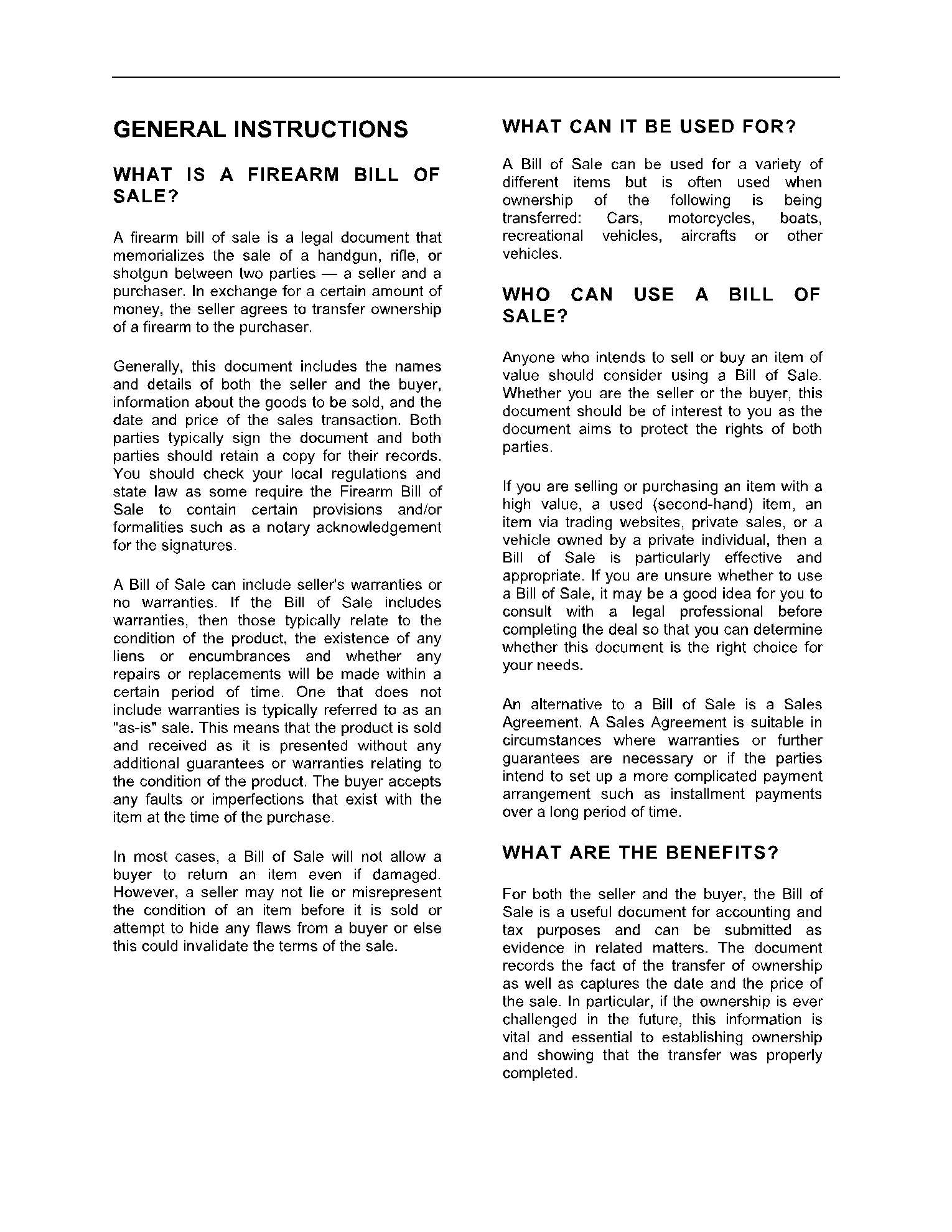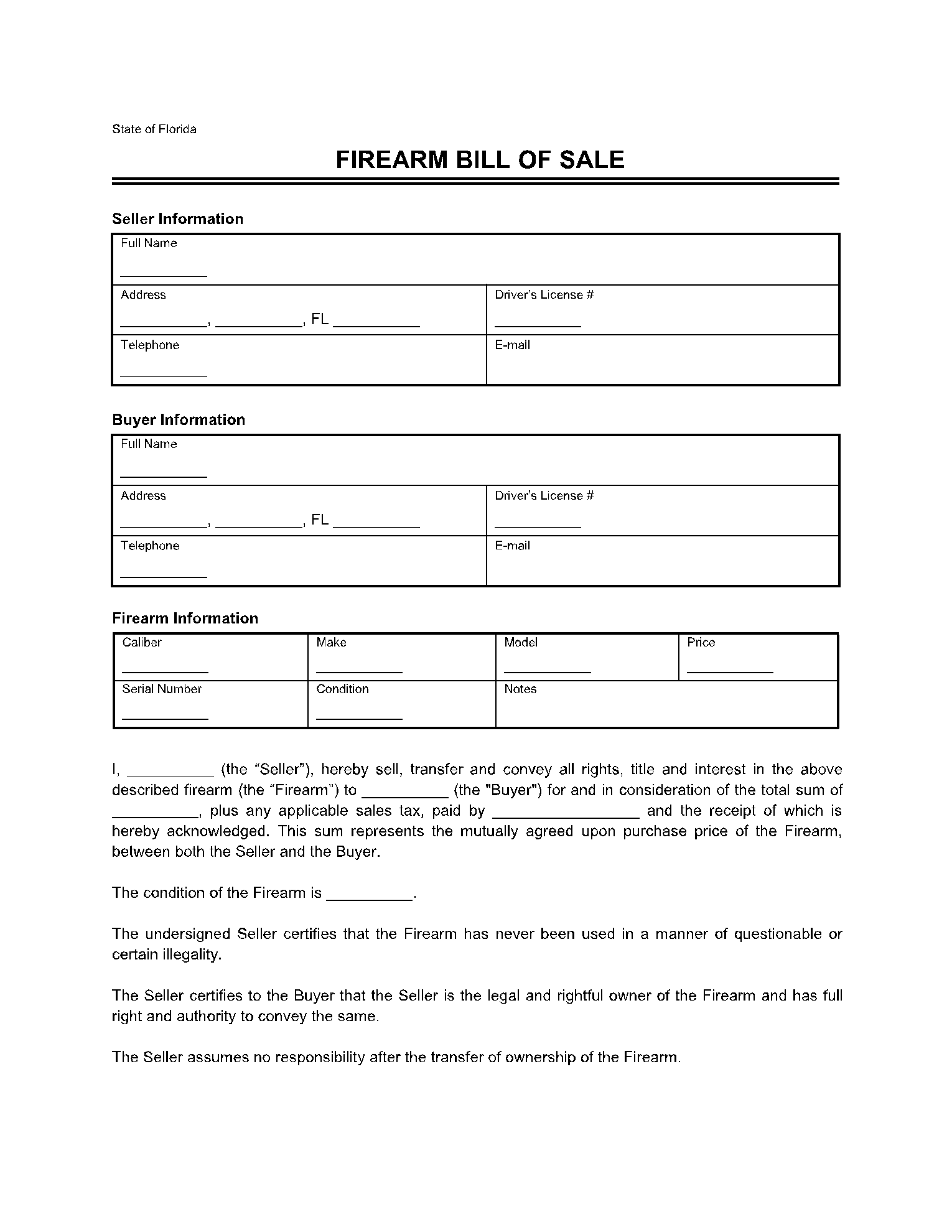The firearm bill of sale is a legal document that acts as proof of a change of ownership of firearms from one person to another within the state of Florida. It is filled out by the seller of the firearm to record its transfer to the buyer.
Usually, there is no specific legal documentation provided by the state to ensure the change of ownership. That’s why a basic template sounds useful and proves to be a legal proof when the template provides necessary details of the seller, the buyer, the firearm and its identification/license number.
How to Register a Firearm in Florida?
Now, the residents of Florida would be wondering if they have to register the firearm they just bought.
The answer is, ‘No.’ According to the legislation, nobody (unless someone has been either adjudicated delinquent or had adjudication withheld for a felony as a juvenile until he reaches the age of 24.
Or he has committed some crime like domestic violence) is compelled to register his/her firearm with the state. So, by this definition, all the residents of Florida technically don’t need to go to any state department for registration, except the aforementioned individuals.
So a question arises here, ‘If there is no need for registration, why would the firearm bill of sale prove to be useful in any sense?’
The answer is that the bill of sale still proves to be beneficial when considering any legal transaction, purchase deal, and proof of ownership.
The state of Florida allows its citizens of 18 years or above to own a shotgun or a rifle. Handguns can be owned over the age of 21 and above, as long as the firearm itself is not restricted in the state, i.e., machine gun or any sawed-off shotgun.
There has been a three days tenure of ‘Cooling-off Period’ after a gun is purchased, which means that the person cannot collect his firearm from the dealer until three working days after the purchase.
What Is Included In a Florida Firearm Bill of Sale?
A typical template of firearm bill includes the following components:
Basic Details of both parties
The seller’s and the buyer’s information is written on the top of the document, including names, contacts info, and complete addresses. It also includes the license number of the seller.
Firearm specifications
The details of the firearm to be sold are written below the section of basic info. The details include identification/license number of the firearm, caliber, type/model, year of make, and serial number (if any).
Trade details
This portion includes the type of transaction and payment methods of the purchase. It usually has four types of blocks:
- The first block includes the price in both numerals and words.
- The second block includes the date of payment (in mm/dd/yyyy format), plus any due date if the amount is to be paid on a later date.
- The third block includes the payment method.
- The fourth block is filled if the firearm is given to the customer as a ‘gift.’
- The last block includes terms of purchase, payment details, and payment due (if the firearm has been sold in terms of installments).
Parties’ disclosure
This part is filled by both seller and buyer along with their signatures. Both read the terms of agreement again in front of a notary public and then sign the portion.
Signature Portion
The signatures of the buyer, seller, and witnesses (along with their names) are put down in this part. The date of the transaction is also written down there. This, thus, concludes the deal and transfers the ownership of the firearm to its purchaser.
How to Sell a Gun in Florida?
In Florida, there are some gun laws that have to be obeyed before making any firearm sale. The seller should be aware that the gun cannot be sold to a state-restricted person or any person under the age of 21. The seller should be licensed from the state department.
There is a waiting period of 3 days in which the seller runs a complete background check of the buyer, before handing him over the firearm. After the complete check-up, the seller and the buyer meet at the table and decide the terms of the agreement.
After this, a firearm bill of sale is filled and signed by both parties, usually in front of a notary public, to complete the deal. Hence, the firearm then belongs to its new owner.
Conclusion
The state of Florida allows its citizens to own firearms without any registration for the purpose of their protection. The firearm bill of sale yet provides a legal document and proof that a specific transaction of a firearm has been made from the seller to the buyer.
It also acts as a proof of ownership so that any future problems may be averted. The template includes the aforementioned basic parts for ensuring a successful trade. Even if there is no need for registration, the bill of sale is required to avoid any crisis and to be on the safe side.
CocoSign provides a great template of Florida firearm bill of sale, and you can have free access to the template and can download it.



